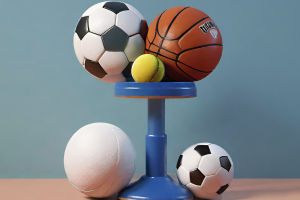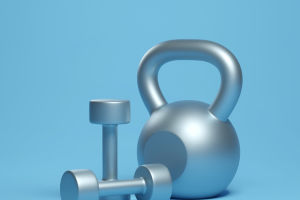Water polo is a high-intensity sport that requires players to stay afloat for extended periods while swimming, passing, and defending.
Staying afloat is not just about treading water; it involves unique techniques and exceptional fitness.
Here, let's explore how water polo players manage to stay above water and perform with remarkable agility!
1. The Eggbeater Kick
The eggbeater kick is the cornerstone of staying afloat in water polo.
• How it works: Players move their legs in alternating circular motions, mimicking the blades of an eggbeater.
• Benefits: This technique provides constant upward push, allowing players to stay stable and balanced without exhausting their arms.
Unlike regular treading water, the eggbeater kick is more efficient and enables players to conserve energy while staying in position.
2. Core Strength
Strong core muscles are essential for water polo players.
• The core stabilizes the body, preventing excessive movement that could disrupt balance.
• A stable core helps players maintain an upright position and react quickly to opponents’ actions.
Exercises like planks, leg raises, and rotational drills are vital for building the necessary core strength.
3. Arm and Leg Coordination
Water polo players use their arms and legs in harmony:
• Arms: While their legs keep them afloat, their arms are free for passing, shooting, or defending.
• Legs: Continuous eggbeater motions ensure they remain buoyant, even when performing dynamic movements.
This coordination is key to staying afloat while executing precise actions in the water.
4. Fitness and Endurance
Stamina plays a crucial role in staying afloat for an entire match.
• Water polo matches last 32 minutes, with players constantly moving.
• Intense training sessions focus on swimming laps, sprinting, and eggbeater drills to build cardiovascular endurance.
Players with greater stamina can maintain their position in the water without fatigue, even under pressure.
5. Body Positioning
Proper positioning minimizes energy expenditure:
• Players keep their heads above water, maintaining a slight lean forward.
• Their legs remain at a consistent depth, generating push without overexertion.
Good body positioning ensures balance and prevents sinking during intense gameplay.
6. Mental Focus
Mental discipline is crucial in water polo:
• Players must remain focused on maintaining their technique, even when fatigued.
• They rely on muscle memory developed during training to stay afloat under stress.
Mental toughness enables them to stay calm and conserve energy during challenging moments.
7. Adaptation to Physical Contact
Water polo is a physical sport involving constant contact:
• Players often face pushing, pulling, and grabbing from opponents.
• The eggbeater kick helps them maintain stability even during these interactions.
Training includes drills that simulate physical challenges, ensuring players can stay afloat while defending or attacking.
8. Training Techniques
Water polo training emphasizes buoyancy and leg strength:
• Eggbeater drills: Players practice maintaining height above water for extended periods.
• Resistance training: Weighted exercises in water improve leg power and endurance.
• Underwater training: Helps players develop breath control and adapt to varying positions.
These routines prepare players for the demands of competitive matches.
9. Role of Buoyancy
Buoyancy naturally aids players in staying afloat:
• Human bodies are slightly buoyant due to axunge and lung capacity.
• Water polo players maximize this buoyancy through controlled breathing and body alignment.
Understanding how to work with the water, rather than against it, is a fundamental skill.
10. Resting Without Exiting the Pool
Even during breaks, players must remain in the water.
• They shift to lighter eggbeater kicks to conserve energy.
• Floating techniques, such as lying back briefly, allow them to recover while staying alert.
Learning to rest efficiently is critical in long matches.
Staying afloat in water polo is a blend of technique, fitness, and mental focus. The eggbeater kick, strong core, and endurance are essential, while training prepares players for the physical demands of the game.
Mastering these skills ensures water polo players remain buoyant, agile, and competitive in the water!


